Creating and editing pipetting techniques
You can create a pipette technique in two ways:
• When setting task parameters in a protocol
• Using the Tools menu
Creating a pipette technique when setting task parameters
To create a pipette technique when setting task parameters:
1 In the VWorks window, create a new protocol.
2 Add the Subprocess (Agilent Bravo) task.
3 Add one of the following tasks:
• Aspirate
• Dispense
• Mix
• Pin Tool
4 In the Task Parameters area, select Pipette technique > Edit technique.
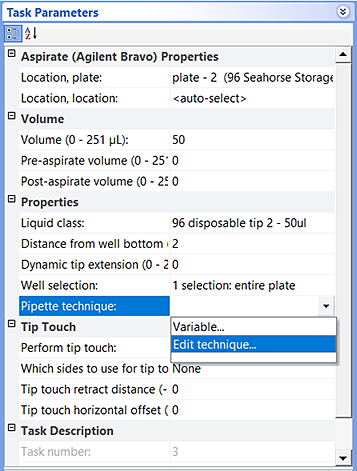 |
The Pipette Technique Editor dialog box opens.
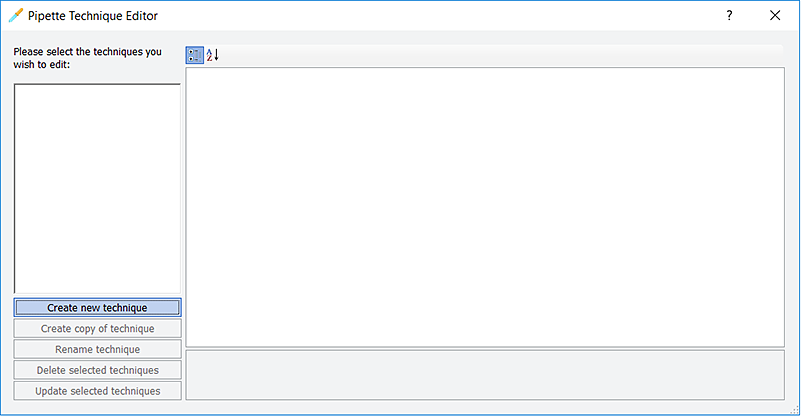 |
5 Click Create new technique, type a technique name, and then click OK. The new technique name appears in the Pipette Technique Editor dialog box. In addition, the X/Y Offset Pipetting parameters appear to the right of the technique name.
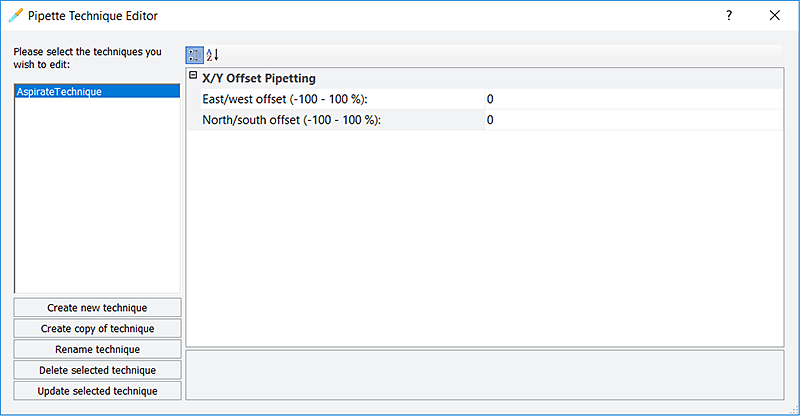 |
6 VWorks Plus only. If an audit trail is being logged, the Audit Comment dialog box opens. Select or type a reason for the change, and then click OK.
7 In the East/west offset (-100 - 100%) box, type the distance (in percent of well radius) for the pipette to move in the X direction:
• 0 does not move the pipette horizontally.
• Positive value moves the pipette to the right.
• Negative value moves the pipette to the left.
Note: The pipette offset directions do not correspond to the robot jog directions in Bravo Diagnostics.
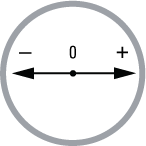 |
8 In the North/south offset (-100 - 100%) box, type the distance (in percent of well radius) for the pipette to move in the Y direction.
• 0 does not move the pipette forward or backward.
• Positive value moves the pipette backward.
• Negative value moves the pipette forward.
Note: The pipette offset directions do not correspond to the robot jog directions in Bravo Diagnostics.
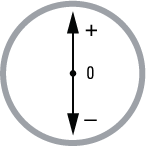 |
9 When you are finished, click Update selected technique.
10 VWorks Plus only. If an audit trail is being logged, the Audit Comment dialog box opens. Select or type a reason for the change, and then click OK.
Creating a pipette technique using the Tools menu
To create a pipette technique using the Tools menu:
1 In the VWorks window, click Tools > Pipette Technique Editor. The Pipette Technique Editor dialog box opens.
2 Click Create new technique, type a technique name, and then click OK. The new technique name appears in the Pipette Technique Editor dialog box. In addition, the X/Y Offset parameters appear to the right of the technique name.
3 VWorks Plus only. If an audit trail is being logged, the Audit Comment dialog box opens. Select or type a reason for the change, and then click OK.
4 Set the parameters in the X/Y Offset Pipetting table.
5 When you are finished, click Update selected technique.
6 VWorks Plus only. If an audit trail is being logged, the Audit Comment dialog box opens. Select or type a reason for the change, and then click OK.
Editing a pipette technique when setting task parameters
To edit a Pipette Technique when setting task parameters:
1 In the VWorks window, open the protocol.
2 In the Main Protocol area, select the task for which the pipette technique will change.
3 In the Task Parameters area, select Pipette technique > Edit technique.
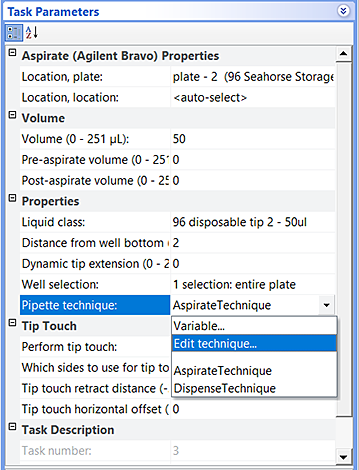 |
The Pipette Technique Editor dialog box opens.
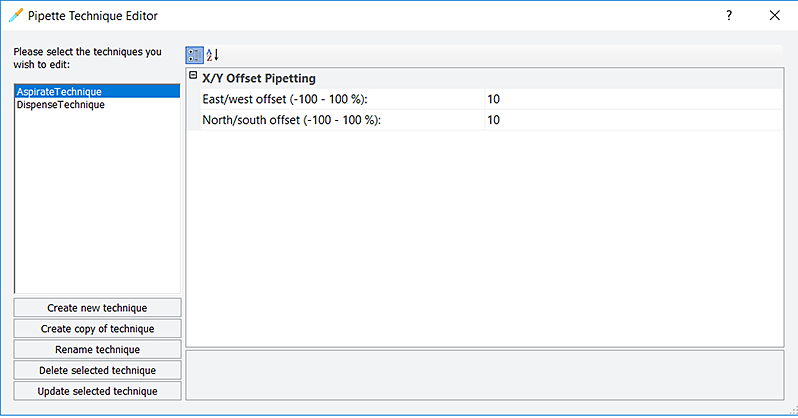 |
4 Select the pipette technique on the left side of the dialog box.
5 Make the desired changes in the X/Y Offset Pipetting table.
6 When you are finished, click Update selected technique.
7 VWorks Plus only. If an audit trail is being logged, the Audit Comment dialog box opens. Select or type a reason for the change, and then click OK.
Editing a pipette technique using the Tools menu
To edit a Pipette Technique using the Tools menu:
1 In the VWorks window, click Tools > Pipette Technique Editor. The Pipette Technique Editor dialog box opens.
2 Select the pipette technique on the left side of the dialog box.
3 Make the desired changes in the X/Y Offset Pipetting table.
4 When you are finished, click Update selected technique.
5 VWorks Plus only. If an audit trail is being logged, the Audit Comment dialog box opens. Select or type a reason for the change, and then click OK.
Pipette technique storage
Shared Services saves each pipette technique as an XML file in a VWorks Projects folder, for example, /VWorks Projects/VWorks/Pipetting/Techniques.
Related information
For information about... | See... |
|---|---|
Pipette Techniques | |
Managing Pipette Techniques | |
Liquid-handling tasks |